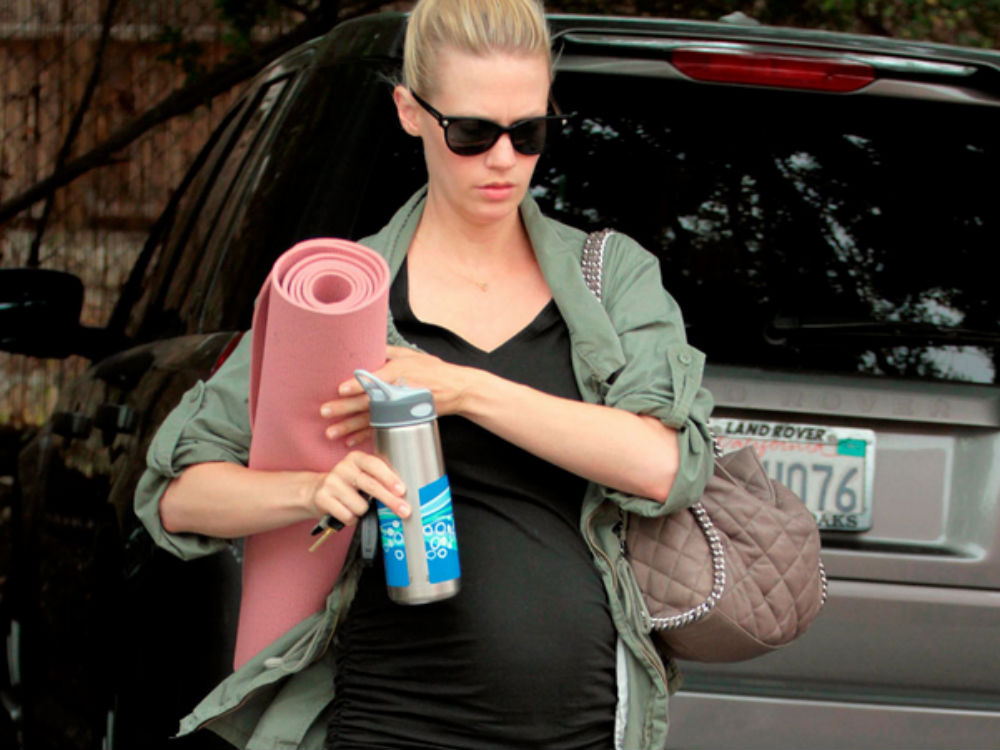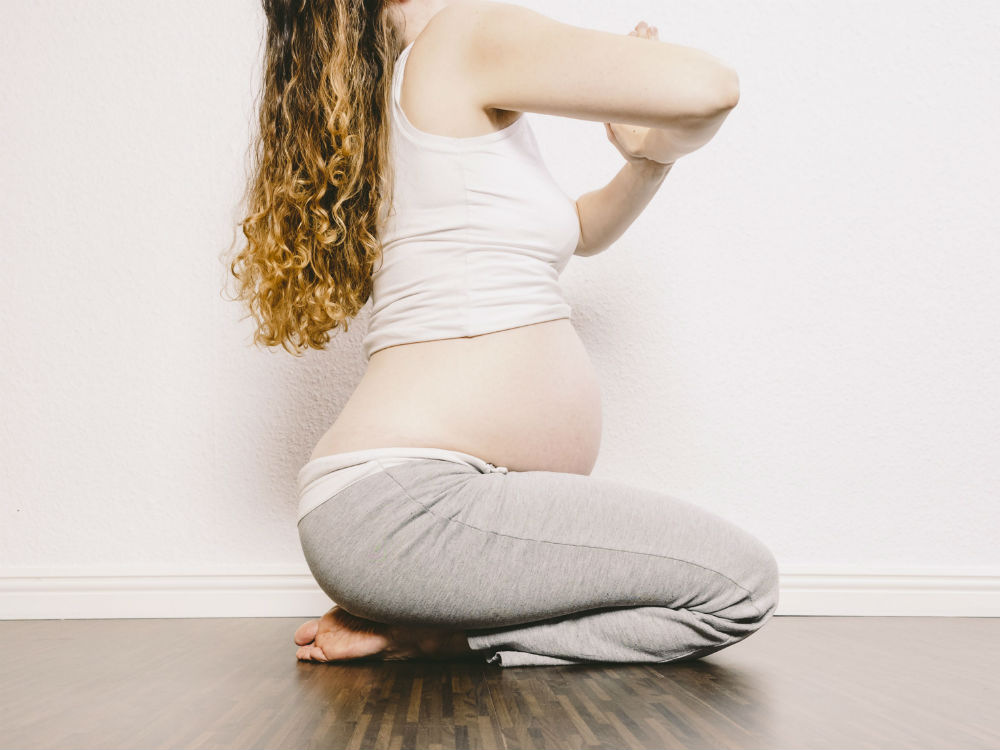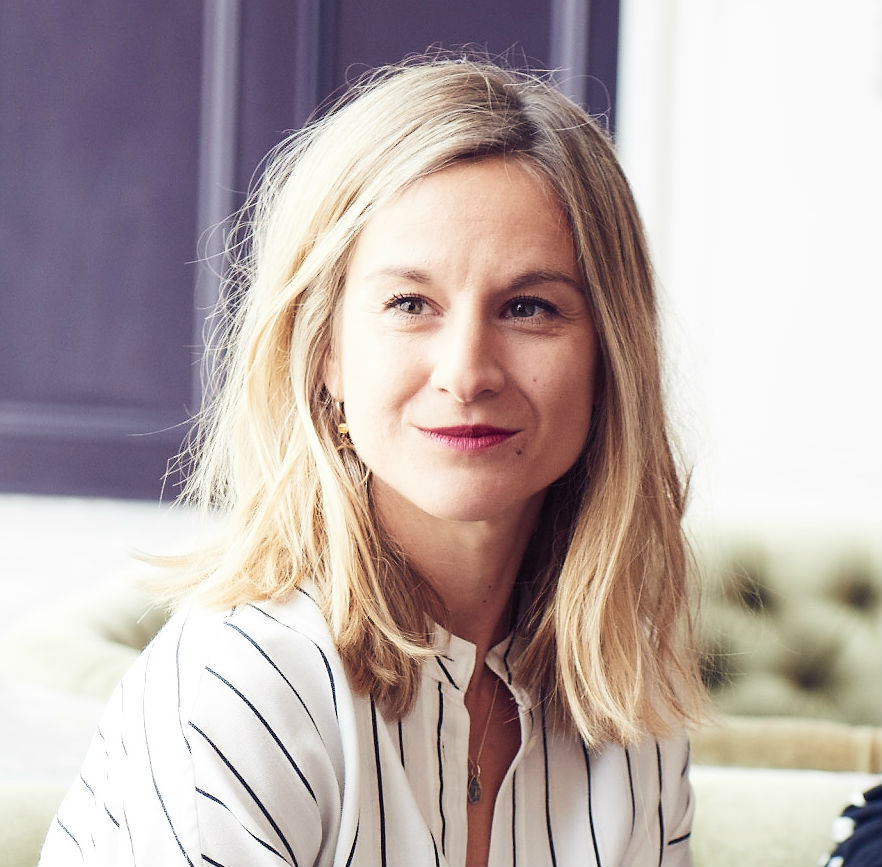Everything you need to know about pregnancy Pilates
Could Pilates be the new pregnancy yoga?


Could Pilates be the new pregnancy yoga?
Until now, pregnancy yoga has always been the go-to workout for women who want to stay fit, healthy and relaxed during pregnancy. But step aside yogis, because pilates is having a moment. ‘I have definitely seen an increase in interest and attendance in my pregnancy pilates classes,’ says Agi Makarewicz, pilates instructor and founder of equipment studio Agile Pilates. ‘It is a fantastic indicator that women are realising the benefits of what it can help them to achieve during pregnancy.’
Both yoga and pilates offer similar benefits, including relaxation, strength and flexibility but the main focus of pilates is on the core. ‘Pregnancy is not the time to build muscle around your abdomen but it’s really important to keep your core muscles strong to support your posture,’ explains Agi. ‘Pregnancy pilates stays absolutely true to its form and concept, but modifying the exercises to meet individuals’ needs and to challenge them, whilst delivering a safe, muscle-building and mind/ body strengthening exercise system for pregnant women.'
The exercises are focused on the abdominals, back and pelvic floor muscles, which are very important when it comes to childbirth. Pregnancy Pilates focuses on balance, strength and coordination. 'It works on keeping the muscles throughout the body - upper body, lower body and abdominal area - strong, toned and connected to the core so as to reduce pregnancy aches and pains and help speed up postnatal recovery,' adds Agi.
Pilates and yoga can both be very helpful and the decision on which one to choose is a personal one, based on your pre-pregnancy exercise regime and what type of fitness you prefer. Agi explains, 'I’ve had clients that have been yoga lovers their whole life and it felt only natural to continue with the practise when pregnant but eventually they felt that the practise wasn’t offering them the support their bodies needed in that very different period of their life and they're grateful to have discovered pregnancy Pilates.' Here she sums up the benefits of prenatal pilates.

The power of pregnancy pilates, by Agi Makarewicz
1. BETTER LABOUR: Pregnancy Pilates works on mobility rather than flexibility. The body needs to keep free and mobile to avoid tightness and aches all whilst avoiding overstretching the ligaments. Relaxin, the hormone that is released during pregnancy in order for the hips to expand to make room for the baby, causes an increased level of flexibility during pregnancy, so loose joints and ligaments mean a greater risk of injury. Pilates can help you to cope more easily with labour and childbirth because it activates key muscles to strengthen them. Secondly, learning how to breathe properly - a key part of Pilates – encourages relaxation, which helps to ease the discomfort of contractions.
Celebrity news, beauty, fashion advice, and fascinating features, delivered straight to your inbox!
2. BOOST YOUR ENERGY LEVELS: Pilates will also help to boost your immune system and circulation, and provide the energy levels needed to enjoy your pregnancy with more gusto and feel better prepared for labour. Once your baby has safely arrived, you can use Pilates classes as ‘me time’, giving you breathing space and bursts of the all important happy hormones (endorphins).
3. FUTURE-PROOF YOUR BODY: Investing in Pilates today will put you on a path for a healthier future. Pilates works like WD40, it literally oils your joints, slowing down the natural ageing process by improving core strength, muscle tone, joint mobility, balance and posture. Children are demanding both physically and mentally but you can keep one step ahead in body and mind.
4. LOVE YOUR CORE: After pregnancy and labour, the abdominal muscles have been stretched to their maximum capacity and are left soft and lax. It takes a long time to stretch the abdominal muscles during pregnancy but after giving birth, there is a sudden release of the uterine stretch on the abdominal muscles. All those changes of the early post labour period have a great effect on movement. Postnatal Pilates exercise programs target compromised ability for the muscles to produce adequate tension as well as providing support of the pelvis and the abdominal wall.
4. DO YOUR RESEARCH: It’s very important to check that your Pilates instructor is fully qualified and able to teach pregnant and post-natal women. You should also discuss any specific medical conditions you have with your instructor and discuss with your midwife or doctor too.
Visit Agile Pilates for more information
